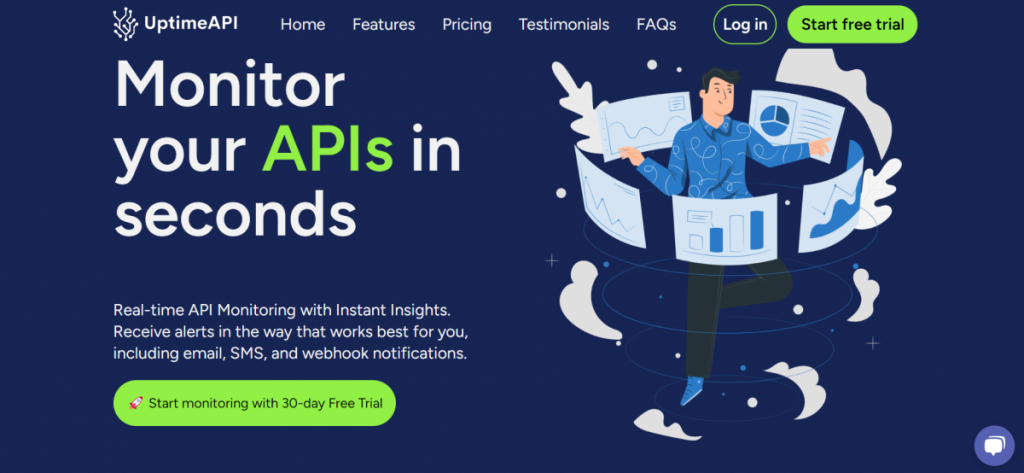API performance monitoring is poised to become more critical than ever in 2024, as the digital landscape continues to evolve rapidly. As businesses increasingly rely on APIs to power their applications and services, staying ahead of the curve with robust monitoring practices is imperative. In this article, we’ll delve into the significance of API performance monitoring in the coming year and explore emerging trends and best practices to ensure your APIs function at their best. Also, we will show you which is the best tool to Monitor Your API Performance.
The Critical Role of APIs in Modern Applications
APIs are the backbone of modern applications, enabling seamless communication between software components. With the proliferation of mobile apps, IoT devices, and cloud-based services, the role of APIs has never been more significant, underscoring the importance of monitoring their performance. As new technologies emerge, so do the challenges of maintaining API performance, making it crucial to adapt and evolve monitoring strategies.
The Importance of Staying Ahead with API Performance Monitoring
In an era where downtime and sluggish APIs can have profound implications on business operations and user satisfaction, staying ahead with API performance monitoring is a strategic imperative. By proactively identifying and addressing issues, organizations can maintain a competitive edge. AI-driven analytics will take center stage in API performance monitoring. Machine learning algorithms will continuously analyze API data to detect anomalies and performance bottlenecks in real time, allowing organizations to address issues before they impact users.
Monitor Your API Performance With Uptime API!
Uptime API is a powerful tool for monitoring API performance. It provides real-time insights into API availability, response time, and other key metrics. By using this tool, you can help you identify and resolve API performance issues before they impact your users. In this way, you are improving customer satisfaction by ensuring that your APIs are always available and performing well.
How To Use The Uptime API?
1: Create an account on the Uptime API Website.
2: Complete the required details in the registration form. You can also, register with Google or GitHub.
3: After signing up, you will receive a verification email.
4: Choose one of the 3 available plans (basic, pro, and plus). There is a 30-day free trial period.
5: When you’re done, click on “Monitors” and then click on “New Monitor”. Complete the required data: API’s name, URL, HTTP Method, etc.
6: Finally, click “Create” and the service will monitor the API, by regularly checking the status.
You can configure Uptime API to send alerts when there are problems with your APIs. You can choose to receive alerts via email, SMS, or Slack. Notifications are in real-time. This way, you will receive the notification immediately and you will be able to solve the problem. Finally, you should know that this service includes an incredible offer! You will be able to use this service for free for a month (30 days)! In this way, you can experience the benefits of Uptime API before committing to a subscription.
Watch this video:
In conclusion, API performance monitoring takes on heightened significance. Adapting to emerging trends and following best practices will be pivotal in ensuring the reliability, security, and efficiency of APIs in an ever-changing digital landscape. Stay vigilant, invest in robust monitoring solutions like Uptime API, and keep user experience at the forefront to thrive in the API-driven future.
Read this post: Alternatives API Monitoring Tools To Site24x7


